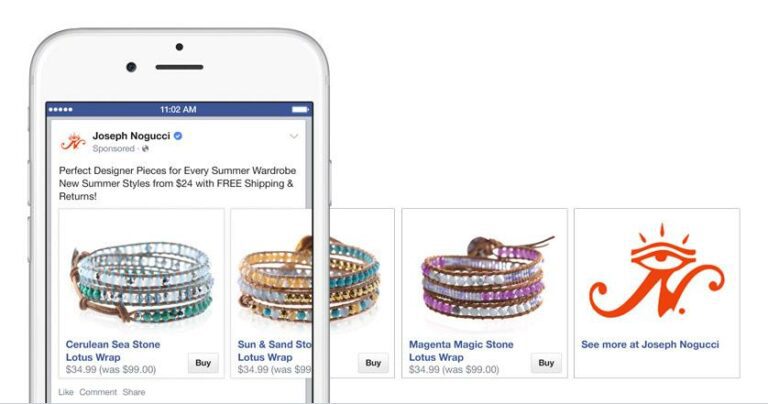Social Commerce in the Philippines: Integrating Shopping into Social Media

Truelogic Takeaways
Social media is no longer just for selfies, memes, and family updates—it’s now the marketplace.
Social commerce has transformed how consumers shop online, accelerated by the pandemic and sustained by Filipino shopping habits.
The ease of shopping on platforms like TikTok and Facebook has turned selling on social media into the new norm. If your brand isn’t selling where your customers scroll, you’re missing out.
Welcome to the era of social commerce in the Philippines, where the line between content and checkout is practically invisible.
As more Filipinos spend hours daily on platforms like Facebook, Instagram, and TikTok, businesses now have the perfect storm of reach, engagement, and conversion, all in one place. With over 86 million internet users and social commerce revenue projected to reach $32 billion by 2033, the opportunity has never been clearer.
Here, we’ll explore the meaning of social commerce, what makes it so popular in the country, and how your business can ride the trend to make more profit.
What is Social Commerce?
When we say social commerce meaning we buy and sell products directly through social media platforms. Think shoppable posts, in-app checkouts, live stream sales, and product catalogs right inside your feed—no need to redirect to another site or cart. In short, social media is now your storefront.
Here are the key features of social media shopping:
Shoppable Posts and Ads
Shoppable posts and ads enable products to be tagged directly within social media content, including images, videos, and ads. When users tap on these tags, they see product details and can buy without leaving the app. This is core to social commerce platforms turning discovery into instant purchase.
Integrated Checkout
Platforms like Facebook and Instagram are closing the loop. Integrated checkout means your customers can browse, select, and pay without ever leaving the app. That frictionless path is what separates social commerce from traditional e-commerce.
Live Selling
Live selling leverages real-time video streams where hosts showcase products, demonstrate features, and interact with viewers. Viewers can ask questions, receive immediate answers, and make purchases through embedded links during the broadcast. It’s social, it’s interactive, and it taps into the FOMO that drives modern commerce.
For brands, it’s the ultimate blend of authenticity and urgency, with conversion rates that leave static posts in the dust.
Messaging-Based Transactions
“DM for price” is now full-service commerce. Messaging-based transactions use DMs and chat apps for orders, recommendations, and payments. When combined with automation, messaging becomes a scalable way to do e-commerce on social media.
Social Commerce vs E-Commerce
While e-commerce usually takes place on standalone websites or online stores, social commerce happens directly inside social media platforms like Facebook, Instagram, and TikTok.
In other words, e-commerce drives traffic to your site, while social commerce platforms keep the entire shopping experience inside the social feed, from product discovery to checkout.
How to Use Social Media for E-Commerce
If you’re wondering how to use social media for e-commerce, start by creating a shoppable presence on platforms like Facebook Shop or TikTok Shop. Post product tags, host livestreams, and use DMs or chatbots to handle orders.
This approach turns social media shopping into a seamless journey that feels native to the way users already interact online.
Why is Social Commerce So Popular in the Philippines?
What separates social commerce from regular e-commerce is frictionless buying. Customers check out at the moment of discovery. If that sounds like a marketer’s dream, it’s because it is.
So, why is social commerce so popular in the Philippines? Three words: time, trust, and traffic. Filipinos spend over 3 hours and 32 minutes daily on social media, placing them among the world’s most active users. That’s plenty of time to scroll, discover, engage, and most importantly for businesses, shop.
Cultural Preference for Social Interactions
Pinoys love to engage. Shopping through comments or live chats feels more personal than clicking through product pages. Approximately 83% who follow influencers are more likely to buy products those creators recommend, perfect soil for social media shopping to thrive.
Facebook is Still King
From local resellers to big brands, Facebook remains a top social commerce platform, widely used for buying and selling. Facebook Shops and similar features are now part of the standard playbook for social e-commerce growth.
Mobile-first Behavior
With smartphones being the primary browsing device, apps like Facebook and TikTok are becoming the default search engines for products. Over 86% of Filipino online shoppers purchase via social media.
The Rise of “Shoppertainment”
Combining entertainment and shopping, especially on TikTok, makes product discovery fun, not forced. Social commerce platforms that lean into entertaining formats (short video, live shows) make discovery feel fun, not forced.
Trust Through Community
Seeing real people comment, review, and ask questions builds a layer of authenticity that traditional e-commerce lacks. With 44% of shoppers relying on influencer recommendations, social proof drives purchase decisions.
Social Commerce Trends to Watch in 2025
The Philippines social e-commerce market is experiencing explosive growth, with revenue expected to reach $2.30 billion by 2025 and expand to $4.17 billion by 2030. Here are the key trends shaping this landscape:
What’s in It for You?
Social commerce isn’t just good UX, it’s a business muscle that impacts revenue, customer loyalty, and acquisition speed. Here’s what you gain from leveraging social commerce platforms and social media shopping effectively.
Increased Conversion Rates
With social commerce, you’re minimizing friction at every stage of the buyer’s journey. The fewer the clicks between discovery and checkout, the higher your chances of sealing the deal. Traditional e-commerce sites still struggle with steep drop-off rates, 98.8% in 2024 and 95.6% in 2025, according to ECDB. These losses often come from redirects, slow load times, or clunky checkout pages.
Social e-commerce strips away those hurdles, keeping customers engaged from scroll to sale. Platforms like Facebook, Instagram, and TikTok now let users browse and buy in-app when their interest peaks, turning curiosity into conversions.
You’re no longer just showing products, you’re creating seamless buying moments at the height of customer intent. This direct path from scroll to sale reduces hesitation, improves purchase speed, and significantly boosts conversions rates. For brands, it’s the sweet spot between marketing and monetization within social media shopping.
Higher Customer Engagement
On social media, engagement isn’t a vanity metric but the new currency of trust. Social commerce lets brands connect with customers in real time, turning posts into conversations and livestreams into product demos. Every like, comment, and share builds algorithmic momentum, expanding your organic visibility.
More importantly, it humanizes your brand. Live Q&A sessions, flash sales, and polls create an interactive space where customers feel heard, not just sold to. This two-way communication fuels better decision-making for buyers and deeper loyalty for brands. When users engage, they remember. And when they remember, they come back, and bring friends.
In a space where attention is currency, engagement is what makes e-commerce through social media truly profitable.
Data-Driven Targeting
Social commerce works best when you’re selling smart. Platforms like Meta (Facebook and Instagram) offer highly targeted tools that enable you to reach the right people at the right time with the right message. Behavior, purchase history, engagement level, location, and even device type are all part of your targeting arsenal.
Plus, real-time analytics allow you to track what’s working and pivot quickly. Which post drove the most clicks? What time are your followers most active? Which products trend by location? Social commerce turns your business into a data-powered sales machine. No guesswork. Just actionable insights that convert.
No guesswork, just actionable insights that help you refine product mixes, tailor messaging, and optimize how your business performs on social commerce platforms.
Cost-Efficient Selling
Setting up a social commerce strategy doesn’t require massive capital investment or a full-blown eCommerce platform. In fact, many Filipino businesses started with just a Facebook page and a Messenger chatbot, and still outsell bigger players. Platforms like Facebook Shop, TikTok Shop, and Instagram’s product tagging system make it easy to build a full storefront within your social feed.
Add in free tools like Meta Business Suite or TikTok Analytics, and you’ve got a complete marketing stack for minimal spend. You can A/B test content, retarget engaged viewers, and scale only what works, all while keeping overhead low. It’s lean e-commerce through social media for the digital age, proving that even small businesses can thrive through social commerce platforms.
Stronger Customer Relationships
Social commerce opens the door to authentic, direct communication with your customers. No call centers, no contact forms, just real conversations in real time. Whether it’s a DM asking for product availability or a shoutout on a livestream, you’re engaging with your audience in their natural habitat.
This kind of proximity builds familiarity, and familiarity builds trust. Over time, that trust turns into advocacy, customers leave reviews, share their experiences, and keep coming back. You’ll see it in the numbers too: better sentiment, more reviews, higher repeat purchases, and a lift in lifetime value. Because when people feel connected to your brand, it shows
Strategies for Successful Social Selling
The barrier to entry for social commerce is low and easy. Anyone can post on Facebook Marketplace or live sell on Shopee. But mastering it and actually profiting? That takes strategy. Here’s what forward-thinking Filipino businesses should do to leverage social commerce fully:
1. Optimize Your Social Storefront
Think of your Facebook Shop or Instagram profile as your digital storefront. Use high-quality visuals that match your brand aesthetic and write product descriptions that answer questions before they’re asked.
Tag products in every post and story so customers can shop directly from their feed. A cohesive, professional-looking storefront builds trust and helps convert passive scrollers into paying customers, especially when the experience feels as curated as your feed.
2. Integrate Seamless Checkout Options
Make the buying journey frictionless. Use in-app checkout features like Facebook Shop strategies or TikTok Shop to let customers make purchases without leaving the platform. If you’re using DMs, automate responses and integrate payment links to speed up transactions.
Every extra step between interest and checkout risks abandonment, so streamline the process to keep conversions flowing. With more Filipinos now choosing online and card payments over cash, a seamless checkout isn’t just convenient, it’s essential. It directly boosts conversions.
3. Go Live
Hosting regular livestreams lets you showcase new arrivals, answer questions, and build urgency in real time. Offer limited-time deals to boost FOMO and keep audiences glued to the stream. It’s entertaining, interactive, and drives impulse buys like nothing else.
Your brand personality gets to shine, and customers feel part of something exclusive and exciting. Live commerce builds stronger emotional connections and boosts organic engagement, making every stream more discoverable.
4. Partner with Micro-Influencers and Leverage UGC
Micro-influencers may have smaller followings, but they often boast stronger engagement, and their communities trust their recommendations. Partnering with local creators to review or demo your products can open up targeted, authentic exposure. It’s word-of-mouth, amplified.
For Filipino brands, it’s also a great way to stay culturally relevant and regionally connected while tapping into audiences who are already primed to buy. User-generated content extends this reach, creating authentic social proof that resonates with potential customers.
5. Utilize Paid Ads Strategically
Social ads are powerful when used wisely. Boost shoppable posts to reach niche audiences based on interests, location, and behavior. Then retarget those who clicked but didn’t buy with exclusive offers or product reminders.
Smart ad spend means amplifying what’s already working and recovering missed opportunities. With proper audience segmentation and creative testing, your paid ads won’t just get seen, they’ll convert.
6. Implement AI Chatbots for Customer Support
A quick and competent response to a customer’s query can make the difference between a sale and a shopping cart that has been abandoned. You can automate customer service and make sure that your customers are looked after 24/7/365 with the appropriate tools.
Use an AI chatbot to connect your social media channels and online commerce. The chatbot responds instantly to customer inquiries, from stock availability to order tracking.
7. Track Everything
Data is your digital compass. Monitor metrics like reach, clicks, engagement, and conversions for every post and campaign. Are certain products performing better via livestream? Which ad creative drove the most sales? Use these insights to double down on what works and refine what doesn’t.
The landscape of online selling is changing fast. Don’t get left behind. You just need the right strategy—and a partner who speaks digital fluently.
At Truelogic, we help Filipino brands bring together storytelling, social, and sales in one seamless experience. Whether you’re planning your first campaign or ready to scale your social shop, we’ve got the playbook (and the pixels) to make it happen.









